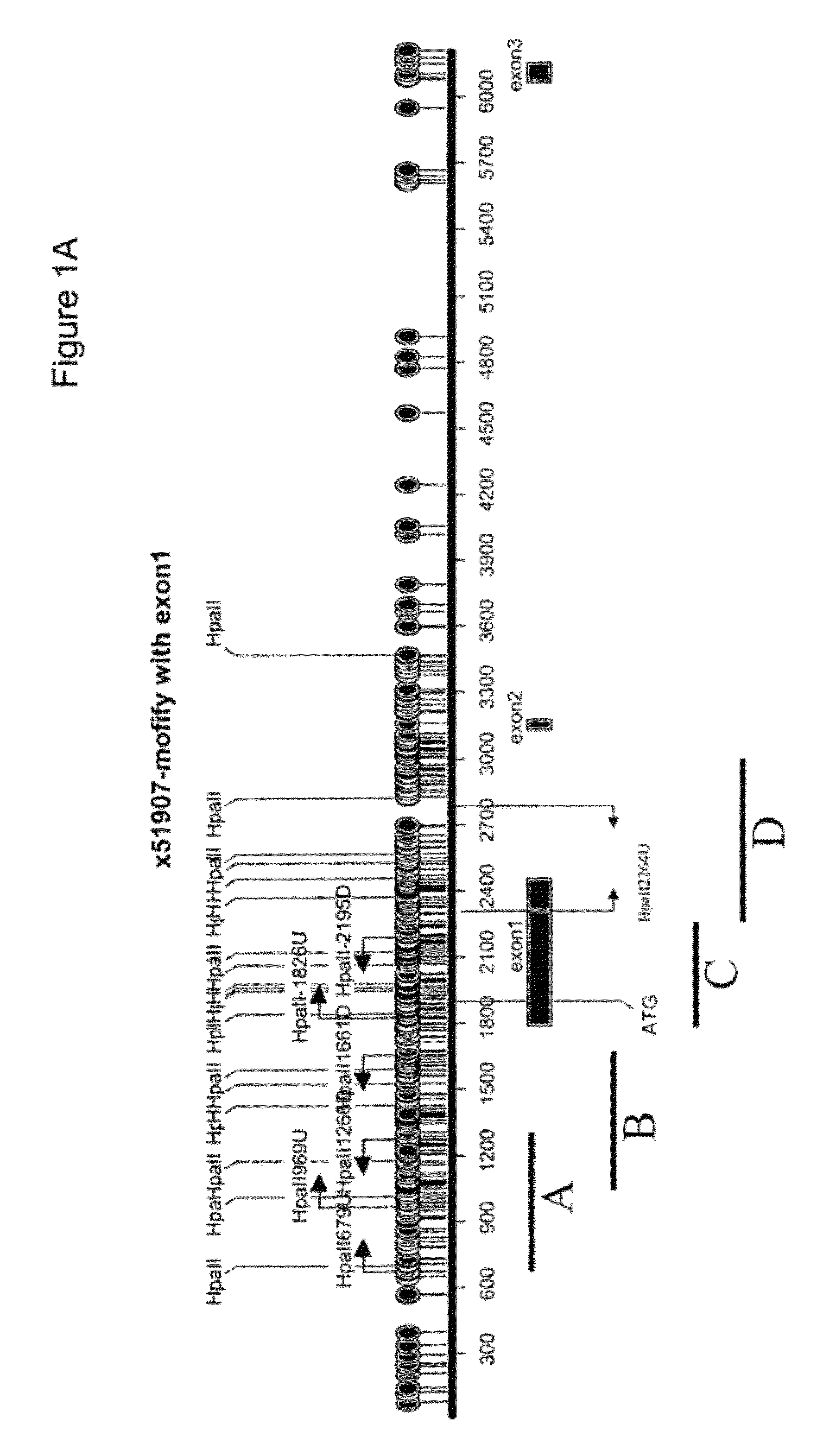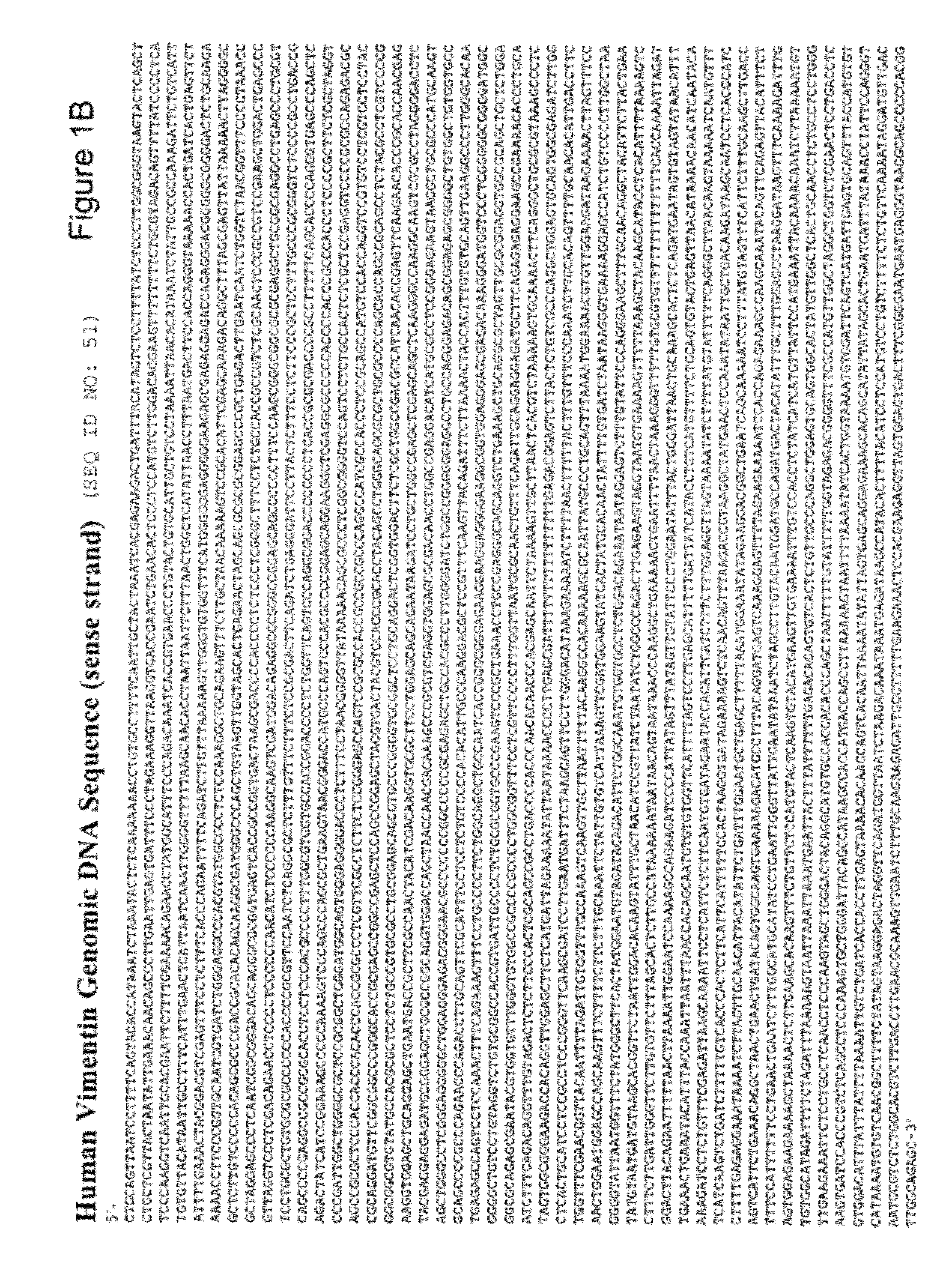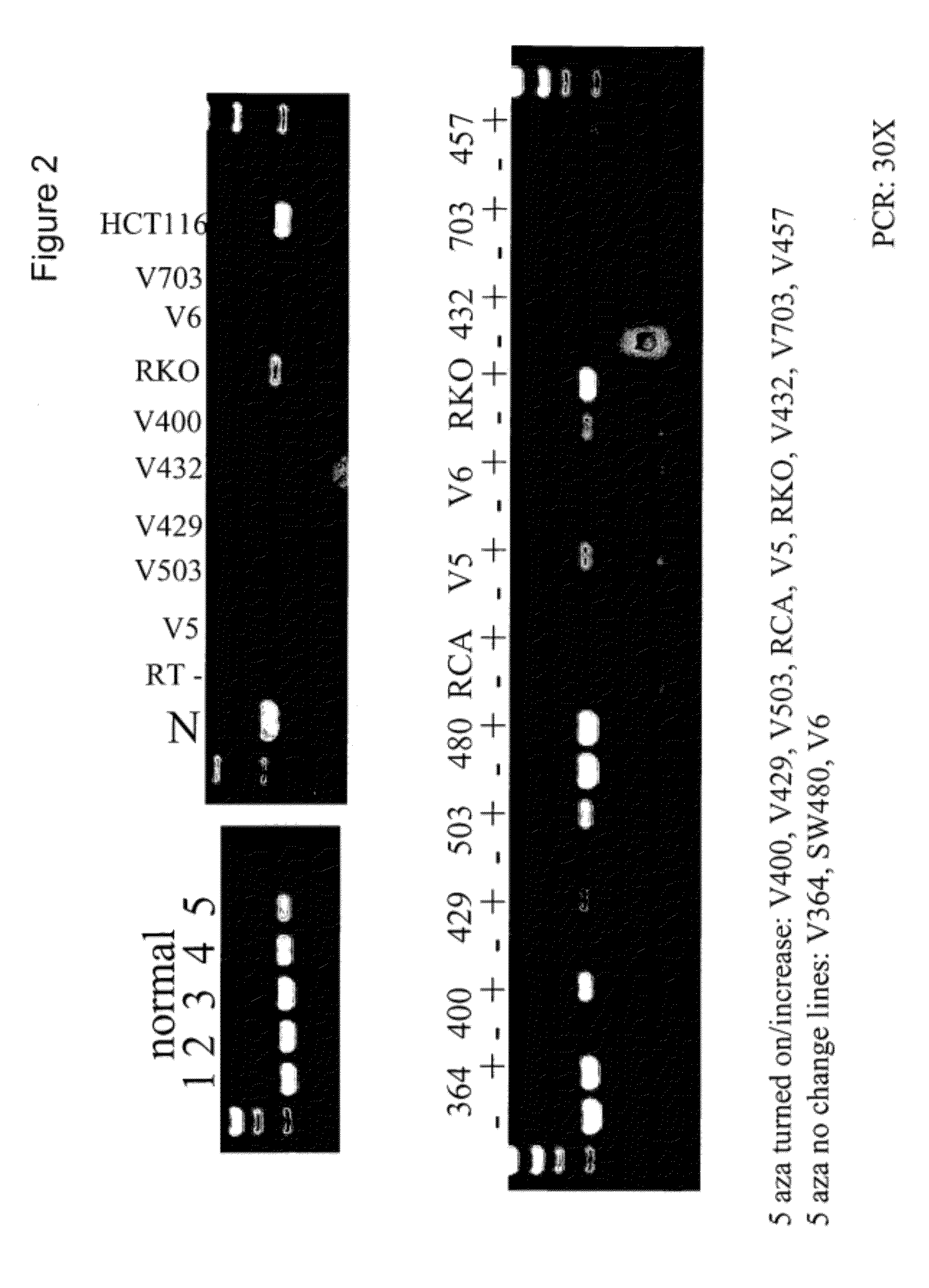Methods and compositions for detecting gastrointestinal and other cancers
a technology for applied in the field of methods and compositions for detecting gastrointestinal and other cancers, can solve the problems of unsatisfactory methods, unpleasant and inaccurate results, and the patient's discomfort in colonoscopy and sigmoidoscopy, which is both uncomfortable and expensiv
- Summary
- Abstract
- Description
- Claims
- Application Information
AI Technical Summary
Benefits of technology
Problems solved by technology
Method used
Image
Examples
example 1
1. Cell Culture and 5-Azacytidine Treatment.
[0219]The cultures were grown and treated as described previously (Veigl, et al., 1998, Proc. Natl. Acad. Sci. USA, 95:8698-8702). The optimal tolerated doses were determined for each treated line, and two doses were used for some lines, ranging from 1 μg / ml to 3 μg / ml.
2. Methylation-Sensitive Restriction Endonuclease Assays (e.g., HpaII Assays).
[0220]We examined the genomic sequence upstream of and within the vimentin gene (herein referred to as 5′-vimentin genomic sequence) which contained a CpG dense region that could potentially be methylated (FIGS. 1 and 6). To test for methylation of this CpG-rich region, we first utilized the HpaII assays. Sample DNAs were digested with the methylation-sensitive enzyme HpaII, and then amplified by a pair of PCR primers. When the DNA is methylated, it is resistant to the HpaII digestion and accordingly a PCR product is produced. On the other hand, when the DNA is unmethylated, it is susceptible to th...
example 2
[0241]The following experiments and data further specify specific regions and their sequences of vimentin whose aberrant methylation is a high frequency marker of colon cancer. These data additionally specify assays for these sequences.
[0242]FIGS. 32-34 are a summary that show a diagrammatic display of the vimentin 5′ genomic region from basepairs 56700 to 58800 of NCBI human genomic sequence entry AL133415. Boxes show the vimentin regions A, B, C and D. Previous HpaII digestion assays had demonstrated that regions A and D were not methylated in cancer. Accordingly, regions through C were exhaustively interrogated with methylation specific PCR assays. Balloons on the figure indicate CpG dinucleotides that are targets for potential methylation. Dark balloons designate CpGs that are population polymorphisms. FIG. 32 designates regions A through B, and FIGS. 33-34 designates regions C through D. Bars under the figure indicate regions interrogated by different methylation specific PCR r...
example 3
[0257]The following studies further examined the development of vimentin methylation in pathologies of the upper gastrointestinal tract using quantitative real-time-based MS-PCR for methylation detection. For these studies, vimentin methylation was detected in formalin fixed and paraffin embedded (FFPE) archived tissues. The assay was applied to samples of Barrett's esophagus, esophageal adenocarinomas, and gastric cancers.
1. Tissues and FFPE DNA Preparation
[0258]Normal and neoplastic gastrointestinal tissue samples were retrieved as FFPE samples that were obtained under an IRB approved protocol. Samples were retrieved either as sections cut from tissue blocks or as cores prepared from tissue blocks. DNA was purified using QIAamp DNA micro kit according to the manufacturer's protocol with the following modifications: initial incubation in buffer ATL with Proteinase K was carried out at 60° C. instead of 56° C. and proceeded for 4 days instead of 16 hours. An additional 1.5 ml of Pro...
PUM
| Property | Measurement | Unit |
|---|---|---|
| length | aaaaa | aaaaa |
| temperature | aaaaa | aaaaa |
| temperature | aaaaa | aaaaa |
Abstract
Description
Claims
Application Information
 Login to View More
Login to View More - R&D
- Intellectual Property
- Life Sciences
- Materials
- Tech Scout
- Unparalleled Data Quality
- Higher Quality Content
- 60% Fewer Hallucinations
Browse by: Latest US Patents, China's latest patents, Technical Efficacy Thesaurus, Application Domain, Technology Topic, Popular Technical Reports.
© 2025 PatSnap. All rights reserved.Legal|Privacy policy|Modern Slavery Act Transparency Statement|Sitemap|About US| Contact US: help@patsnap.com



